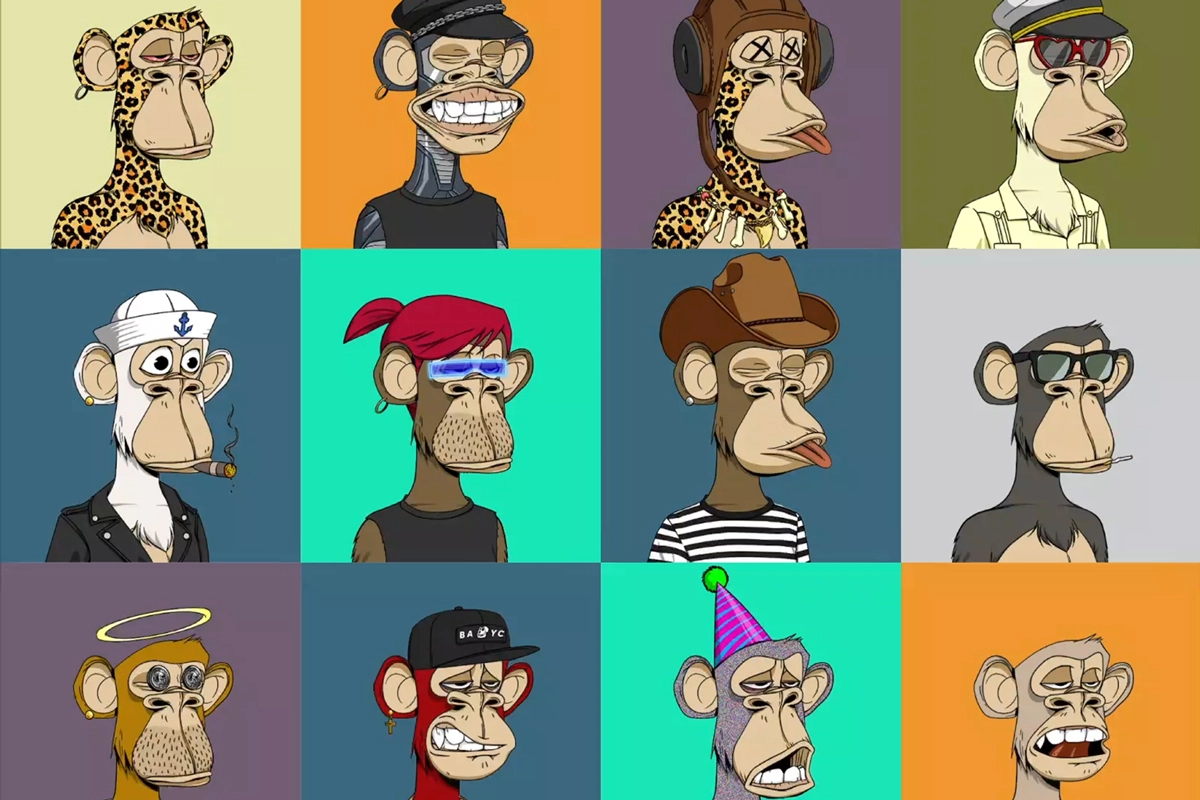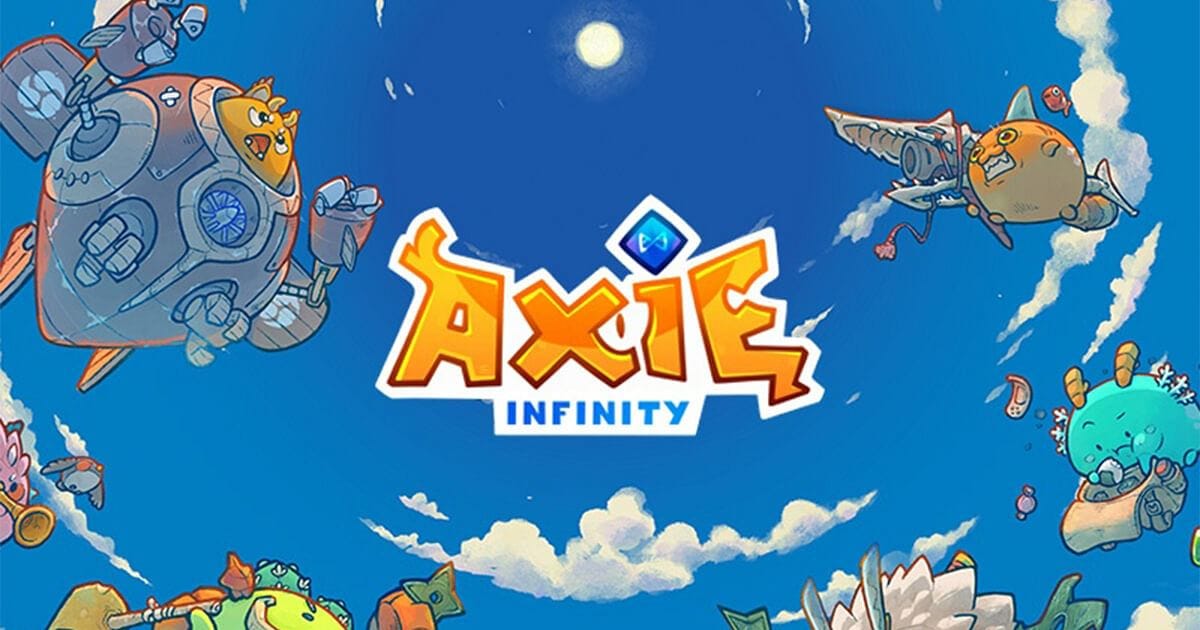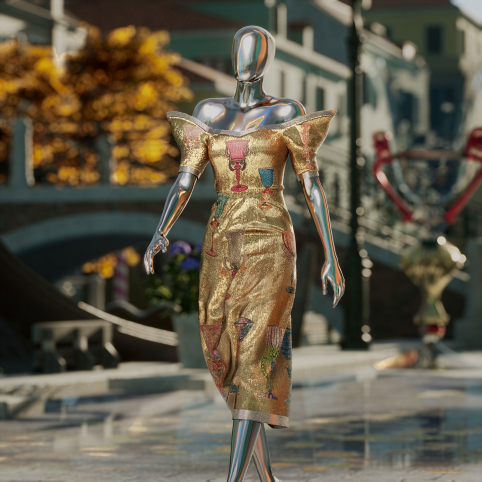Understanding NFTs: Past, Present and the Future of a Tokenized Economy

NFTs are no longer fringe, nor confined to a small group of geeky code enthusiasts and technologists. Art and collectible NFTs have gone mainstream with mind numbing speed — faster than even the most optimistic crypto enthusiast could have dreamed of. During 2020–2021 the NFT sector exploded onto mainstream media and popular culture with celebrities such as Steph Curry, Eminem, Paris Hilton, and Jimmy Fallon all jumping on board of the NFT band wagon, by creating, collecting or selling NFTs. If you would have told me five years ago that crypto art would be responsible for making blockchain mainstream, I would have laughed out loud. But in hindsight it should have been obvious. After all NFTs (especially art and collectibles) are fun, tangible, culturally relevant and they’re easy to understand in a way that many blockchain concepts are not. But it’s not just celebrities who have jumped on board. Brands such as Nike, Disney, Gucci, Tag Huer, Tiffany, Christie’s, Sotheby’s and Dolce & Gabana are leveraging this technology.
What Are Front-End Frameworks?
So the question is why should brands and creative content creators care? First, brands are using this technology to make personal connections with their fans; create strong digital communities to increase loyalty and trust; create new channels of revenue and potentially make their most loyal fans shareholders of this new revenue.
Content creators can take control of their intellectual IP; cut out the middleman for more share of their sales; decide on how they want to control their copyrights and create their own communities based on their core values and style.
So WTF are NFTs anyway?
NFT stands for non-fungible tokens. Fungibility is the property of a good or a commodity whose individual units are interchangeable; a $100 note can easily be exchanged for twenty $5 bills, etc. Fungible tokens are the ones that can be exchanged or replaced; for example, a Bitcoin is interchangeable with 1 million Satoshis (smallest units of Bitcoin). In contrast, non-fungible tokens cannot be exchanged in the same manner.
NFTs are different from traditional cryptocurrencies like Bitcoin because each individual NFT is unique and cannot be replaced by another token. This makes them perfect for use in a variety of applications, from digital collectibles to decentralized marketplaces.
The implications of having unique digital records of goods on the blockchain can be significant; what started as as simple jpeg art stored on blockchains has evolved into video games, music, films, animations, wearables and so much more.
In short the answer to the question, ‘what are NFTs?’ is: non-fungible tokens are a way of registering a one-of-a-kind digital product, or even, a physical item on a blockchain. It’s decentralized, traceable and its’ authenticity can be certified on a blockchain.
History
The first known “NFT”, Quantum, was created by Kevin McCoy in May 2014. It consists of a video clip made by McCoy’s wife, Jennifer. It sold for $1.47m in June 2021 during Sotheby’s “Natively Digital” auction.

The term “NFT” only achieved wider usage with the ERC-721 standard, first proposed in 2017 via the Ethereum GitHub. The standard coincided with the launch of several NFT projects, including Curio Cards, CryptoPunks and rare Pepe trading cards.
Curio Cards is an online art show and the First Art NFTs on Ethereum, launched May 9, 2017. Featuring 30 unique series of cards from seven different artists, Curio Cards is referenced in the original ERC-721 Non-Fungible Token Standard and pre-dates CryptoPunks.

CryptoPunks is a non-fungible token (NFT) collection on the Ethereum blockchain. The project was launched in June 2017 by the Larva Labs studio, a two-person team consisting of Canadian software developers Matt Hall and John Watkinson.

There are 10,000 unique CryptoPunks (6,039 male and 3,840 female), all of which are made digitally scarce through the use of blockchain technology. Each one was algorithmically generated through computer code and thus no two characters are exactly alike, with some traits being rarer than others. They were originally released for free and could be claimed by anyone with an Ethereum wallet. The only costs to claim a CryptoPunk during their initial release were Ethereum (ETH) “gas fees”, which at the time, were negligible due to little use of both the Ethereum blockchain and little knowledge of the project as well.

A rare Pepe or RarePepe is a variation on the “Pepe the Frog” internet meme, itself based on a character created by Matt Furie. The related Rare Pepe crypto project, created by various artists worldwide between 2016 and 2018, was based on the aforementioned meme and traded as non-fungible tokens (NFTs) recorded on the CounterParty platform. A total of 1,774 official cards were released for the project across 36 series.
On October 26, 2021, a rare Pepe, PEPENOPOULOS sold at a Sotheby’s auction for $3.6m USD

The 2017 online game CryptoKitties was made profitable by selling tradable cat NFTs, and its success brought public attention to NFTs.

Players purchase, breed and trade virtual cats that have different visual features of varying levels of rarity. Players must purchase Ether cryptocurrency to join the game, and spend it to perform each breeding and trade action within the game.
The virtual cats are breedable and carry a unique number and 256 bit distinct genome with DNA and different attributes (cattributes) that can be passed to offspring. Several traits can be passed down from the parents to the offspring.
The NFT market experienced rapid growth during 2020, with its value tripling to US$250 million. In the first three months of 2021, more than US$200 million were spent on NFTs.
The Bored Ape Yacht Club is an NFT collection that features profile pictures of cartoon apes that are procedurally generated by an algorithm.

Yuga labs is the parent company of Bored Ape Yacht Club and the project launched with a live pre-sale on April 23, 2021 after first being minted on April 20, 2021. Owners of a Bored Ape NFT are granted access to a private online club, exclusive in-person events, and intellectual property rights for the image.
The collection exists on the Ethereum blockchain and contains 10,000 unique NFTs derived from 172 unique assets. The NFTs function dually as a membership card to Yacht Club. Membership to the club includes access to THE BATHROOM (stylized in all caps), a digital graffiti board. The NFTs were originally sold for 0.08 ether each, around $190 at the time of their April 2021 launch and were sold out in 12 hours.
As of 2022, sales of the Bored Ape Yacht Club NFTs have totaled over US$1 billion. Various celebrities have purchased these non-fungible tokens, including singer Justin Bieber, television host Jimmy Fallon, rapper Snoop Dogg, rapper Eminem, singer Madonna, and DJ Steve Aoki.
The NFT boom gave rise to a new breed of artists as well as provided a new venue for established digital artists. Perhaps the most notable artist during this boom is Michael Joseph Winkelmann (born 20 June 1981), known professionally as Beeple – an American digital artist, graphic designer, and animator known for selling NFTs. Beeple’s best known NFT is Everydays: the First 5000 Days, a collage of images from his “Everydays” series where he committed to create a piece of art everyday for 5000 days. Beeple started this practice in May 2007 and has not stopped yet.
Everydays: the First 5000 Days was sold on March 12, 2021, for $69 million in cryptocurrency to an investor in NFTs. It is the first purely non-fungible token to be sold by Christie’s.

Another artist who found new audience and was able to connect with his fan base in a new way is Refik Anadol is a Turkish-American new media artist and designer and also my personal favourite digital artist active in the NFT space. His projects consist of data-driven machine learning algorithms that create abstract, dream-alike environments. He lives and works in Los Angeles.

As of writing this article in September of 2022, the NFT market, like much of the rest of the market, has been greatly affected by economic pressures of inflation and central banks monetary tightening policies. In May 2022, The Wall Street Journal reported that the NFT market was “collapsing”. Daily sales of NFT tokens have declined 92% from September 2021, and the number of active wallets in the NFT market fell 88% from November 2021. Skeptics have been quick to call this decline the burst of the NFT bubble; although I do agree that what we experienced in 2020–21 was exuberant and over-the-top behaviour, I also believe that the NFT market at large and the underlying technology is here to stay and will mostly likely come back even stronger in the future simply because of it’s use cases, and with that being said let us dig a little deeper into what those use cases are today and what it could potentially be in the future.
NFT Use cases
Gaming
Every day, there are 2 million people who play with the little blobs of Axie Infinity, which now has a valuation of $3 billion. Gaming would be a natural area for the growth of NFTs because you already have billions of people who are buying digital goods inside of games. Devin Finzer, CEO of OpenSea, the largest NFT platform believes that the reason we haven’t yet seen an even wider adoption of NFTs in gaming is that “the development cycle is a little longer with games than with simpler arts and collectible projects. There’s a little more of a delay.” He imagines we’ll see the fruits of these developments within a year or two.

Research is showing that “people spend five times more in a blockchain game than in a conventional game.” If the gamer can exit the game and cash out with crypto, and if they’re free to do whatever they want with the money then they’ll more likely spend more money in the game. Axie might just be the very beginning of a much larger boom in gaming that could potentially be huge in the next decade.
Fashion and wearables
Luxury brands have entered the NFT space in a major way. In Sep. of 2021, Dolce & Gabbana sold its inaugural nine-piece collection of NFTs, called “Collezione Genesi,” a surreal mix of high fashion and blockchain, for $5.6 million. The set included both physical items and their digital companions as NFTs.

Earlier in August of 2021, at London Fashion Week, a new brand called Auroboros, which describes itself as “the first fashion house to merge science and technology with physical couture,” showcased a line of digital apparel that you “wear” using augmented reality (AR). For added perspective, this was not done at a crypto conference or anything geeky like that. This happened at London Fashion Week.

Consider the collaboration between The Bored Ape Yacht Club and The Hundreds (high-end streetwear), which created merchandise for the NFT community, and sold out in hours. The fashion brands know an eager (and deep-pocketed) audience when they see one. “In 18 years, we’ve never seen anything like what’s happening on our website right now,” The Hundreds co-founder Bobby Hundreds gushed at the time. “Just wow.”

In April of 2022, Nike released its first collection of digital sneakers, called Cryptokicks, which comprised 20,000 NFTs. The dynamics around virtual and real-life sneakers are pretty similar; both are created around scarcity, community, status and belonging to something.
This is Nike’s first entry into the market and its first release with RTFKT (pronounced “artifact”), a company it bought last December.
In July of 2022 Tiffany & Co unveiled and quickly sold out a limited collection of 250 custom iced-out pendants for holders of CryptoPunks. Tiffany sold 250 “NFTiffs,” digital passes which can be minted and redeemed for custom-designed CryptoPunks pendants and a matching NFT art piece.
Fashion wearables might just be scratching the surface. Imagine that NFTs could create new ways to monetize and invest in fashion. Take sneakers as an example. In order to flip a sneaker you have to take the physical inventory but what if you could increase the speed in which you can flip items by flipping the NFT of that sneaker? Fake luxury goods is a huge problem that NFTs can help to solve by creating authenticity certification of the luxury on the blockchain. Or maybe imagine new financial instruments, fuelled by NFTs, that could allow enthusiasts to invest in the fashion sector. You can create financial products, like an index of the top-selling sneakers today as an example, which could let you invest in a pool of the 100 hottest sneakers, instead of tossing the dice on a single pair.
NFT community platforms
When you buy into a Bored Ape Yacht Club, CryptoPunk or World of Women NFT, it shows that you belong in the club. People identify with these NFTs on a personal level. Ownership says something fundamental about their identity; it says something about their interests and core beliefs. The community aspect of an NFT is a major factor in the incredible success of projects such as Bored Ape yacht Club and Cryptopunk or more recently Moonbirds. These NFT communities could be the foundation for stronger digital communities of the future.
Metaverse
The metaverse is going to be one of the future game-changers of the NFT space. The short version: the metaverse can be a place to store and appreciate NFT art, it can be a hub for gaming, it’s Zuckerberg’s new mission in life for a reason. Perhaps it’s an evolved version of how we’re all hanging out online anyways.
Virtual land
Virtual land ties in close to the emergence of Metaverse. As the Metaverse becomes more mainstream then the idea of owning digital real estate can become mainstream as well. Virtual worlds like Decentraland, The Sandbox and Cryptovoxels give their real-estate a hard cap, meaning that — in theory — a finite supply will become more valuable if the demand soars.
Once you begin to wrap your mind around the idea that people could profit from digital real estate, the possibilities are dazzling. Maybe you own a plot of virtual land and you build a virtual office building in it, and then you could rent out the building for a virtual conference. And when the conference is over perhaps some of the attendees want to blow off some steam, maybe visit a lounge for their cocktail hour, or perhaps a casino that lets them win and lose real cryptocurrency. The demand for architects building virtual structures and real estate agents brokers selling virtual land might seem far-fetched now but this is where we seem to be heading.
Digital identity
Self-sovereign identity (SSID) has long been one of the most intriguing applications of blockchain technology, and NFTs could be the key that unlocks the door.
These NFTs can be categorized these as “Utility NFTs,” in the sense that you can not typically exchange them for money (like art and collectibles), but instead they exist to prove that you own something. Simply connect your digital wallet which would contain your proof of ID and you can be authenticated in seconds.
Another idea in the same vein: NFTs of college diplomas or any other educational certificate. This would let anyone with a certificate or degree in any subject matter decisively prove that she has a diploma.
Tokenization of everything
NFT could also represent physical real-life goods of value. In the not-so-distant future all forms of value will be represented as an NFT. We’re spending most of our waking hours online and this is a trend that will continue to accelerate in the next 20 or 30 years, and so it possible that we’re going to have a lot more digital goods than we do today. In the future, if you buy a cool pair of Air Jordans (physical ones that go on your feet), you many want its NFT companion. You’ll want the NFT so you can flaunt it, flex it and perhaps to use it in a metaverse or a play-to-earn game.
People will eventually want NFTs of their wine, baseball cards, rare coins, watches, cars — you name it — that’s the way the world is going towards.
Conclusion
NFT is till in its early stages and no one really knows right now where the technology could lead but one thing is for sure and that is that this technology has already gone mainstream and already changed many industries in a big way. I believe in the long term that NFT will continue to increase transparency on transactions in the art world, retail and beyond. NFT can help protect intellectual and physical property ownership and enable a more measureable copy rights management for creators.
In the coming years we will see more development in this field, and we all might be surprised on how soon things progress not at the rate that it is going.
In the words of the great Wayne Gretzky “…skate to where the puck is going to be, not where it has been.” So as proponents of innovation and change for the better we need to have a line of sight of where technological shifts are occurring and be at the forefront of the advancement of our common good.
